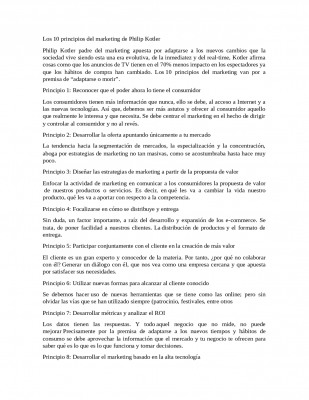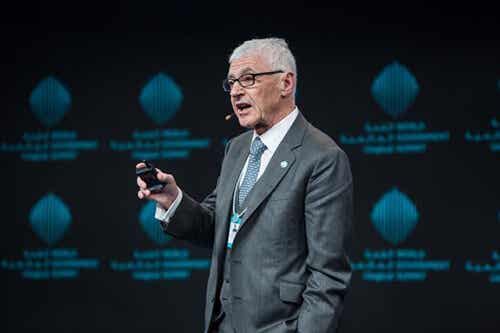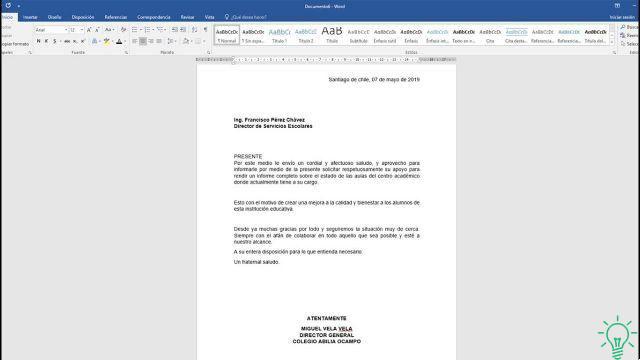Within the professional spheres, there may be different types of leadership. Let's see those identified by psychologist Daniel Goleman.

Last update: Augusts 30, 2020
In today's society, where almost everything is done in collaboration with other people, the ability to coordinate and lead groups has become a fundamental skill. There are many psychologists who have studied this concept, among them Daniel Goleman is worth mentioning. In addition to being interested in the study of emotional intelligence, he has also written books and conducted research to decipher and recognize the various types of leadership.
The six types of leadership identified by Daniel Goleman currently represent the most used classification within different disciplines. So, for example, in the business world, many managers study his research to try to improve their leadership skills.
In this article we will tell you about the different types of leadership identified by Goleman, their characteristics and differences.
What are the types of leadership according to Daniel Goleman?
In his book A Small Manual of Emotional Intelligence for Leaders Who Get Results, Daniel Goleman described 6 different types of leadership. Each of these is based on a specific component of emotional intelligence and those who manage to develop it reach considerable milestones.
The types of leadership defined by Daniel Goleman are not incompatible with each other. On the contrary, the best leaders are able to draw important elements from each of them, managing to adapt to the demands of the moment in a very flexible way.
In any case, in order to choose which leadership is best suited to a given situation, it is first necessary to know them all. As described by Goleman in his work, the six types of leadership are as follows:
- Authoritarian (or coercive).
- Democratic.
- Affiliate.
- Visionary (or orientative).
- Tread.
- Coach.
1- The coercive or authoritarian leader
The first type of leadership studied by Daniel Goleman is based on discipline. Managers who follow this model try to maintain discipline above any other value. For this, they usually use short, concrete and precise instructions.
The consequences of not following the order will be harsh and in many cases will try to set a precedent, serving as a warning to those who are tempted to relax or who tend not to follow the guidelines to the letter.
This generally causes group members to become unmotivated: workers feel that they have no control over their work, that their operability and decision-making capacity do not go beyond that of a machine.
This type of leadership should only be used in situations where it is necessary to act in a very specific way or where there are many organizational problems in the group. For example, during an emergency or when an extremely complex operation is performed, where limits allow you to limit any errors.
2- The democratic leader among the different types of leadership
Democratic leadership follows the idea that the views of the whole group must be taken into consideration when a decision has to be made. This usually involves a multitude of meetings, debates and speeches.
It will be particularly useful in cases where there is a lot of time to choose the path to follow and where the training of all group members is similar.
On the other hand, democratic leadership is often employed when the working group is multidisciplinary, therefore it is necessary to combine the different disciplines to define the projects. That is to say, when it is necessary to reach agreements in those points where the disciplines come together or overlap, so that the result is a positive adaptation of the various subjects.
3- The affiliate leader
The third type of leadership of Daniel Goleman is based on the creation of bonds between the different members of the group. Harmony and collaboration between them is the first goal to be achieved.
We are talking about a leadership that aims, above all, at creating a serene, relaxed atmosphere, because it will become a positive stimulus for workers.
The main difficulty encountered by this leader is the possible lack of discipline and organization. If internal conflicts break out, there will be further problems, because the emotional involvement of people will be very high.
4- The visionary leader
Leaders who use this style motivate their subordinates through a clear and exciting vision. They know how to show everyone their role in the project.
The main advantage of this leadership is that everyone knows exactly which way and where the team is moving, so it will be easier to row on the same side. It is one of the most in demand types of leadership today.
5- The different types of leadership: tread
The role of tread is used to set a course and be able to maintain it firmly. The leader sets himself as an example, so he always tries to act without ever betraying a particular model.
In general, it is used by people who like to feel like protagonists. The problem is that it limits the creativity of the team, unable to add anything of their own to the final project. In addition, of course, to compliance with a pre-established script.
This type of leadership is particularly effective when only the leader is an expert in the field and the rest of the members agree to take on the project as part of a learning process.
6- Il leader coach
Of Goleman's different types of leadership, this one it is all about helping group members find their strengths and weaknesses. He works for each of them to develop their full potential.
This is because a worker who grows and acquires new knowledge and skills contributes more effectively to the success of the company than someone who always stays at the same level.
The types of leadership proposed by Daniel Goleman obviously have both advantages and disadvantages. It is therefore essential to choose at all times the one that best suits the group and its circumstances.
It should be borne in mind that the development of leadership skills will be useful both for company managers and for all those who have to work as a team and who have, as their goal, the achievement of a common goal.

























